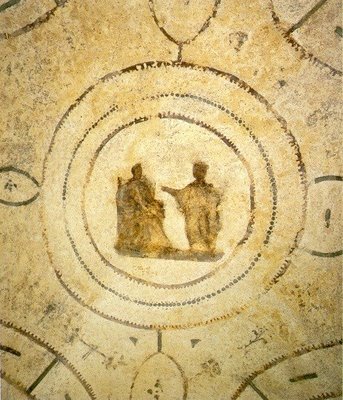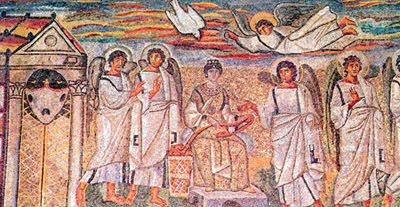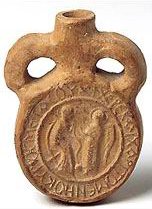|
Early history |
|
|
|
|
|
|
|
|
Veneration of the Virgin began early in the
development of Christianity, but it remained localised and somewhat
unofficial. The first Council of Nicaea in 325 recognised the truth of the
virgin birth, but the key moment was probably the first Council of
Ephesus in 431 when Mary was declared the Mother of God. After this
time, churches dedicated to the Virgin appeared, notably Santa Maria
Maggiore in Rome. Among the many beautiful mosaics in this church is this fifth
century Annunciation -
Gabriel has now acquired wings, and the Holy Spirit has become a dove. |
|
|
|
|
|
A fascinating source of early Christian images come from ampullae, small flasks for holy water or oil brought back from holy sites by pilgrims. This sixth century ampulla showing an annunciation scene is from the Israel Museum in Jerusalem. |
|
|
|
|
|
In these early years Christian iconography was problematic. To many it echoed a pagan past, and to produce images of Mary could summon up memories of, and suggest parallels with, goddesses such as Isis or Aphrodite. As the centuries passed, memories of the old gods began to fade. Acceptance of any images was still uncertain, however. Some considered them idolatrous, and in the east the periods of iconoclasm between 730 and 787 and 814 to 842 brought about the destruction many Marian icons. However, the Second Council of Nicaea (787) permitted such images, on the understanding that it was the person depicted, not the image itself, that was being venerated. All of these pronouncements were, of course, supported by lengthy theological argument, but as much as anything they were probably an unspoken recognition of the human need for, and insistence upon, a mother goddess to worship. Marian devotion remained much more potent in the East than the West, and the full flowering of her image in Europe didn't appear until the second millennium. |
|


